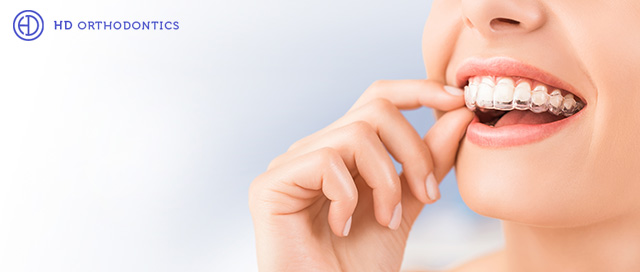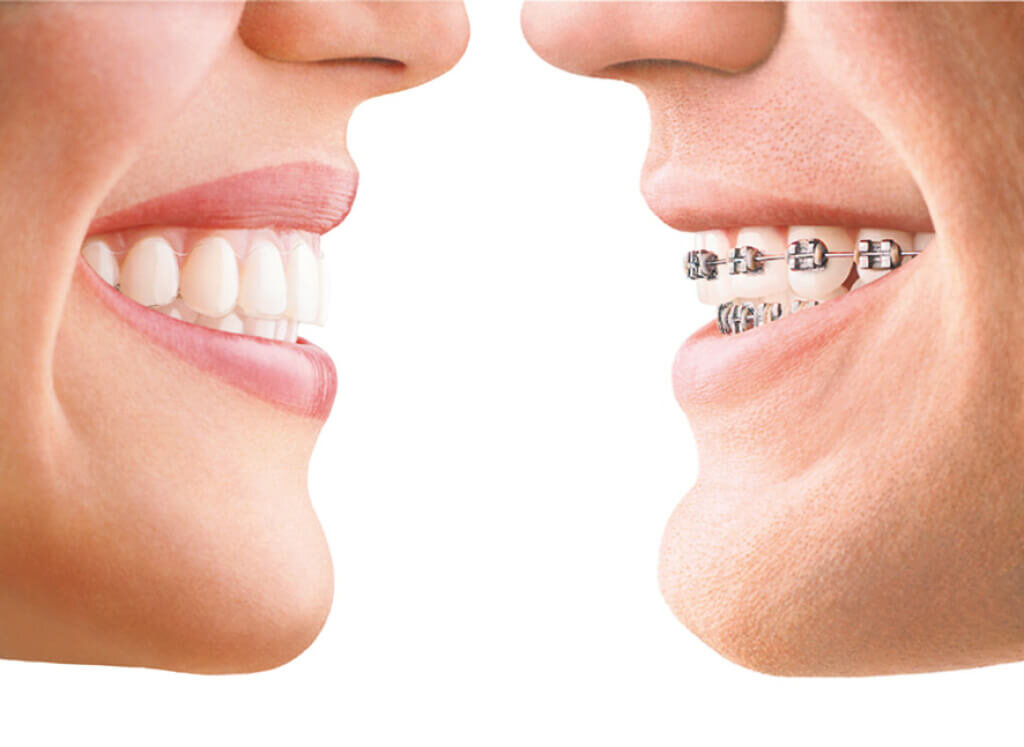Invisalign vs. Traditional Braces: Which Option Is Right for You?
When taking into consideration orthodontic therapy, the option in between Invisalign and conventional dental braces presents several important aspects that warrant cautious analysis. Invisalign supplies a very discreet option with removable aligners, while conventional braces offer a much more visible yet reliable remedy for extreme imbalance.
Overview of Treatment Options

On the other hand, typical dental braces include steel brackets and wires that are bound to the teeth. This approach applies constant stress over time to accomplish placement. While effective for complex orthodontic problems, typical dental braces require routine gos to for modifications and can posture challenges in maintaining dental health as a result of the difficulty of cleaning up around cords and braces.
Both options have their advantages, and the selection often hinges on particular oral problems, lifestyle preferences, and patient compliance. Ultimately, getting in touch with an orthodontic expert is important for establishing one of the most appropriate treatment plan customized to private demands. Understanding the subtleties of each option can substantially affect the general success of orthodontic therapy.
Visual Factors To Consider
A significant element influencing the choice in between Invisalign and typical dental braces is the aesthetic appeal each treatment uses. Invisalign aligners are crafted from clear plastic, making them virtually undetectable when used.
In contrast, traditional dental braces include metal brackets and cables, which can be much more noticeable. While innovations in orthodontic technology have resulted in the advancement of smaller sized braces and tinted elastics, conventional dental braces still preserve a more obvious account. For some individuals, the visibility of braces may deter them from seeking essential therapy.
Inevitably, the selection between Invisalign and conventional braces may depend upon personal choices regarding looks. Clients that prioritize discretion often favor Invisalign, while those that are much less worried regarding presence might go with standard dental braces. Understanding the aesthetic implications of each option is vital for making an informed decision that lines up with one's way of life and choices.
Convenience and Convenience

In regards to comfort, Invisalign aligners are detachable, enabling patients to appreciate their preferred foods without restriction and keep ideal dental health. Brushing and flossing are streamlined, as the aligners can be secured during these regimens, whereas standard braces call for mindful navigating around brackets and cords.
In contrast, typical braces require normal modifications, making them much less convenient for those with hectic timetables. Overall, the comfort and convenience of Invisalign make it an attractive selection for numerous people looking for orthodontic treatment.
Treatment Duration and Performance
While both Invisalign and conventional dental braces work in fixing oral imbalances, the period of treatment can vary dramatically between both choices. Typically, Invisalign treatment can take anywhere from 12 to 18 months, depending upon the intricacy of the instance. The clear aligners function by gradually moving teeth right into their wanted placements, and normal follow-ups with an orthodontist help guarantee development stays on course.
On the other hand, traditional braces usually need a longer dedication, normally varying from 18 months to three find this years. This results from their set nature and using braces and cords, which can be a lot more effective for extreme misalignments and intricate cases (Invisalign). The treatment efficiency of standard braces is well-documented, as they enable for accurate adjustments and greater control over tooth movement
Inevitably, the selection in between Invisalign and typical dental braces may hinge on both the anticipated therapy period and the certain dental problems at hand. Consulting with an orthodontist is essential, as they can offer tailored referrals based upon individual needs, ensuring the picked approach lines up with desired timeframes and end results.
Price Comparison and Insurance Choices
Expense plays a substantial function in the decision-making process for individuals thinking about orthodontic treatment, whether going with Invisalign or standard braces. Usually, the expense of Invisalign ranges from $3,000 to $8,000, while typical braces usually cost in between $2,000 and $6,000. Factors affecting these costs consist of the complexity of the instance, the period of treatment, and geographical location.
Many dental insurance coverage strategies provide partial coverage for orthodontic therapies, yet the specifics can vary commonly. Normally, traditional braces may be a lot more frequently covered by insurance policy strategies compared to Invisalign, which some insurers categorize as an aesthetic procedure.
Furthermore, a number of orthodontic techniques supply flexible payment plans, making both treatment choices extra accessible. Clients ought to ask regarding prospective funding choices and price website link cuts for ahead of time settlements. Evaluating the total cost, consisting of insurance advantages and settlement strategies, is essential for making an informed choice that straightens with both visual choices and budget plan considerations.

Verdict
In recap, the selection in between Invisalign and standard dental braces depends upon several elements, consisting of aesthetic choices, comfort, treatment period, and price. Invisalign offers a very discreet, detachable choice that assists in dental hygiene and dietary adaptability, while typical dental braces may be see this site a lot more appropriate for complex oral concerns and commonly come at a lower rate point. Ultimately, consultation with an orthodontist is vital to assess specific circumstances and establish the most ideal therapy choice for attaining optimal dental positioning.
When thinking about orthodontic treatment, the selection in between Invisalign and traditional dental braces provides numerous crucial factors that warrant mindful examination.Comparing Invisalign and standard braces discloses distinct therapy options for orthodontic improvement.While both Invisalign and conventional dental braces are efficient in dealing with dental imbalances, the duration of therapy can differ substantially between the two options.Expense plays a significant function in the decision-making procedure for individuals thinking about orthodontic therapy, whether opting for Invisalign or standard braces.In recap, the choice between Invisalign and typical braces hinges on numerous factors, including aesthetic choices, comfort, therapy period, and price.